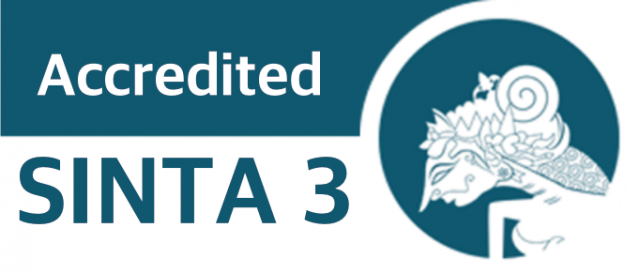Penerapan Model Pembelajaran Inside-Outside Circle untuk Meningkatkan Aktivitas Belajar Siswa pada Mata Pelajaran PKn
DOI:
https://doi.org/10.24114/antro.v3i1.7494Keywords:
Inside-Outside Circle and learning activitiesAbstract
The purpose of this research are: (1) To increase student learning activity on Civic subject by using Inside-Outside Circle model. (2) To improve learning outcomes by using Inside-Outside Circle technique. This type of research is classroom action research (CAR). Implementation carried out as much as 2 cycles, each cycle consists of planning, action, observation, and reflection. The subjects of the study were the fourth grade students of SDN 101768 Tembung. Data collection techniques used were interviews, observations and tests. The results show that the use of Inside-Outside Circle model can increase student activity and learning result which is seen from the increase of active participation of students in group discussion, ability to identify learning with Inside-Outside Circle model. Improved learning process is able to increase student learning activities. The liveliness of students in asking before action 14,81%, in cycle I is 37,2%, in cycle II is 81,45%. The activity of students in answering questions before action 7.4%, in the first cycle is 37.03%, the second cycle is 74.07%. Student activity in attitude before action of 7,4%, in cycle I is 44,4%, in cycle II is 74,07%. Activity of student in doing problem independently before action 37,03%, in cycle I is 55,5%, in cycle II is 74,07%. Value of PKN student learning outcomes before action is only 31.25% with an average score of 56.5 while in cycle I, the value of student learning outcomes increased to 62.5% with a mean score of 70.31. In the second cycle the value of student learning outcomes that reach KKM is 81.25% with an average value of 74.06.References
Arikunto,S. 2001, Prosedur Penelitian . Jakarta, Rineka Karya.
Arikunto, Suharsimi, Suhardjono, Supardi. 2008. Penelitian Tindakan Kelas. Jakarta: Bumi Aksara.
Depdiknas. (2003). Peraturan Menteri Pendidikan Nasional Nomor 20 Tahun 2003 tentang Standar Isi. Jakarta: Depdiknas.
Slameto, 2010, Belajar dan Faktor-Faktor Yang Mempengaruhinya. Jakarta Rineka Cipta
Muhibbin Syah, 2009, Psikologi Belajar. Ed. Revisi,-8.-Jakarta: Rajawali Pers.
Herman Hudoyo, 2004, Menuju Belajar Efisien, Jakarta : Gunung Agung.
Lukman AH, 2007. Kamus Besar Bahasa Indonesia, Jakarta : PN. Balai Pustaka.
Hartini, S, Suwarno, & Marsudi, S. 2008. Psikologi Pendidikan. Surakarta: BP- FKIP UMS
Hisnu dan Winardi, 2008. PKN untuk SD/MI. Jakarta. PT. Aneka Ilmu.
Ilmiati dan Nuryanti, 2008. Dinasti PKN Kelas 4 Untuk SD/MI. Sragen. PT. Karya Mandiri.
Mujdjiono, 2007. Belajar Dan Pembelajaran. Jakarta. Rineka Cipta.
Rubino Rubiyanto. 2009. Metode Penelitian Pendidikan. Surakarta: PGSD-FKIP UMS.
Samino dan Saring Marsudi. 2011. Layanan Bimbingan Belajar. Surakarta: Fairuz Media.
Yasa. 2008. Aktivitas dan Prestasi Belajar. Bandung : Rosdakarya.
Moch. Masykur, (2007). Pengertian belajar. Jakarta : PT Gramedia
Yamin. 2005. Pengertian Belajar dan Perubahan Perilaku dalam Belajar. Jakarta: PT. Gramedia.
Kasihani Karbolah (2001). Penelitian Tindakan Kelas. Jakarta: Bumi Aksara
Downloads
Published
How to Cite
Issue
Section
License

This work is licensed under a Creative Commons Attribution 4.0 International License
Authors who publish with this journal agree to the following terms:
- Authors retain copyright and grant the journal right of first publication with the work simultaneously licensed under Creative Commons Attribution 4.0 International License that allows others to share the work with an acknowledgement of the work's authorship and initial publication in this journal.
- Authors are able to enter into separate, additional contractual arrangements for the non-exclusive distribution of the journal's published version of the work (e.g., post it to an institutional repository or publish it in a book), with an acknowledgement of its initial publication in this journal.Penulis.
- Authors are permitted and encouraged to post their work online (e.g., in institutional repositories or on their website) prior to and during the submission process, as it can lead to productive exchanges, as well as earlier and greater citation of published work (Refer to The Effect of Open Access).


